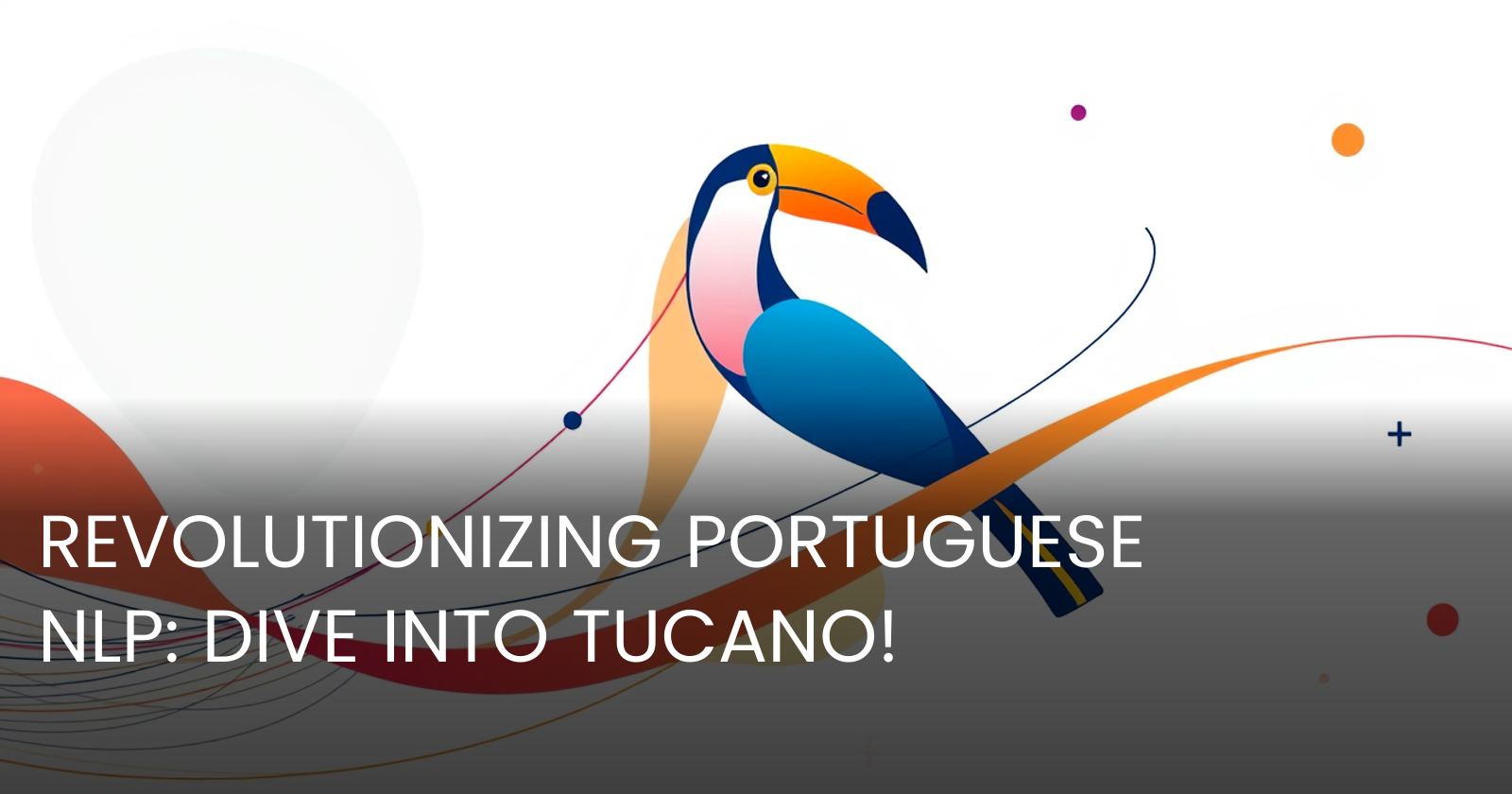The Tucano Series: Shaping the Future of Portuguese Natural Language Processing
 Gabi Dobocan
Gabi Dobocan
- Arxiv: https://arxiv.org/abs/2411.07854v1
- PDF: https://arxiv.org/pdf/2411.07854v1.pdf
- Authors: Shiza Fatimah, Sophia Falk, Aniket Sen, Nicholas Kluge Corrêa
- Published: 2024-11-12

In this blog article, we'll unravel the intricacies of the scientific paper on the Tucano series, a groundbreaking initiative designed to bolster natural language processing (NLP) capabilities for the Portuguese language. We'll discuss its main propositions, innovations, potential business impacts, and how companies can harness its potential to optimize operations and unlock new revenue streams. This article is your gateway to understanding how cutting-edge NLP technologies can influence the future of language understanding and generation.
What Are the Main Claims in the Paper?
The paper presents the Tucano series as a collection of open-source large language models tailored for the Portuguese language. These models aim to improve NLP capabilities, particularly for low-resource languages like Portuguese. The main claims emphasize that the Tucano models perform on par or better than existing Portuguese and multilingual language models of similar scale across several Portuguese benchmarks. Moreover, the paper suggests a shift towards more rigorous and reproducible research practices within the community.
What Are the New Proposals and Enhancements?
The Tucano series proposes a suite of developments, notably the creation of the GigaVerbo corpus, which includes 200 billion tokens of deduplicated Portuguese text that form the training backbone for the Tucano models. This development can significantly enhance the representation and understanding of Portuguese in computational applications.
The paper also recommends scaling the models to larger architecture sizes, improving benchmarks for evaluation, and exploring the downstream applications of the Tucano models. These enhancements aim to provide robust infrastructure for future endeavors in the Portuguese NLP domain.
How Can Companies Leverage the Paper?
The implications of the Tucano series extend beyond academic research. By adopting these models, companies can develop more sophisticated language tools and applications tailored to Portuguese-speaking markets. For instance, customer support systems, linguistic analytics, and AI-driven content creation can be significantly optimized using advanced NLP models like Tucano. Companies can also explore new products and services, harnessing natural language understanding and generation to stay competitive in the digital landscape.
The open-source nature of the Tucano series means that businesses, startups, and developers can access and customize the models, reducing developmental costs and accelerating time-to-market for innovative language solutions.
What Are the Hyperparameters? How Is the Model Trained?
The Tucano models use a variety of hyperparameters designed to optimize performance. These include employing the AdamW optimizer, gradient clipping, and a cosine learning rate decay strategy. Training occurs over several epochs, with a specific number of total optimization steps, batch sizes, total tokens processed, and learning rates applied according to model size.
The training regimen is extensive, requiring careful adjustments to maximize model efficiency while ensuring scalability. Models are trained using BF16 mixed precision, enhancing computational efficiency without sacrificing precision.
What Are the Hardware Requirements?
To train and operate the Tucano models efficiently, substantial hardware resources are necessary. For instance, models utilize NVIDIA A100 GPUs, with configurations varying between 8 to 16 GPUs depending on the model scale. Such setups allow processing millions of tokens per second, with memory footprint management essential for achieving ideal training throughput.
This configuration ensures that even large datasets and complex models can be handled effectively, providing an advantageous baseline for companies with sufficient computational infrastructure.
What Are the Target Tasks and Datasets?
The models are evaluated on several Portuguese benchmarks to gauge performance across a variety of NLP tasks. The use of GigaVerbo, a massive and comprehensive language corpus, underpins the models' data requirements, allowing thorough exploration and application across different linguistic tasks.
How Do the Proposed Updates Compare to Other SOTA Alternatives?
The Tucano series not only holds its ground against existing Portuguese and multilingual models but often surpasses them in benchmark performance. This comparison underlines the importance of targeted language resources in crafting high-performing, language-specific NLP applications.
The paper's critical assessment of benchmarks indicates a need for better evaluation methods that accurately correlate model scale with performance improvements. This proposal seeks to foster new industry standards in evaluation practices.
In conclusion, the Tucano series offers a valuable contribution to the realm of Portuguese NLP through innovative model architecture, training strategies, and open-source accessibility. By engaging with the Tucano series, companies are potentially opening doors to new business avenues, optimizing operational processes, and staying ahead in an ever-competitive digital world. This series signifies a meaningful step toward bridging the gap for low-resource languages in the global NLP landscape.
Subscribe to my newsletter
Read articles from Gabi Dobocan directly inside your inbox. Subscribe to the newsletter, and don't miss out.
Written by

Gabi Dobocan
Gabi Dobocan
Coder, Founder, Builder. Angelpad & Techstars Alumnus. Forbes 30 Under 30.